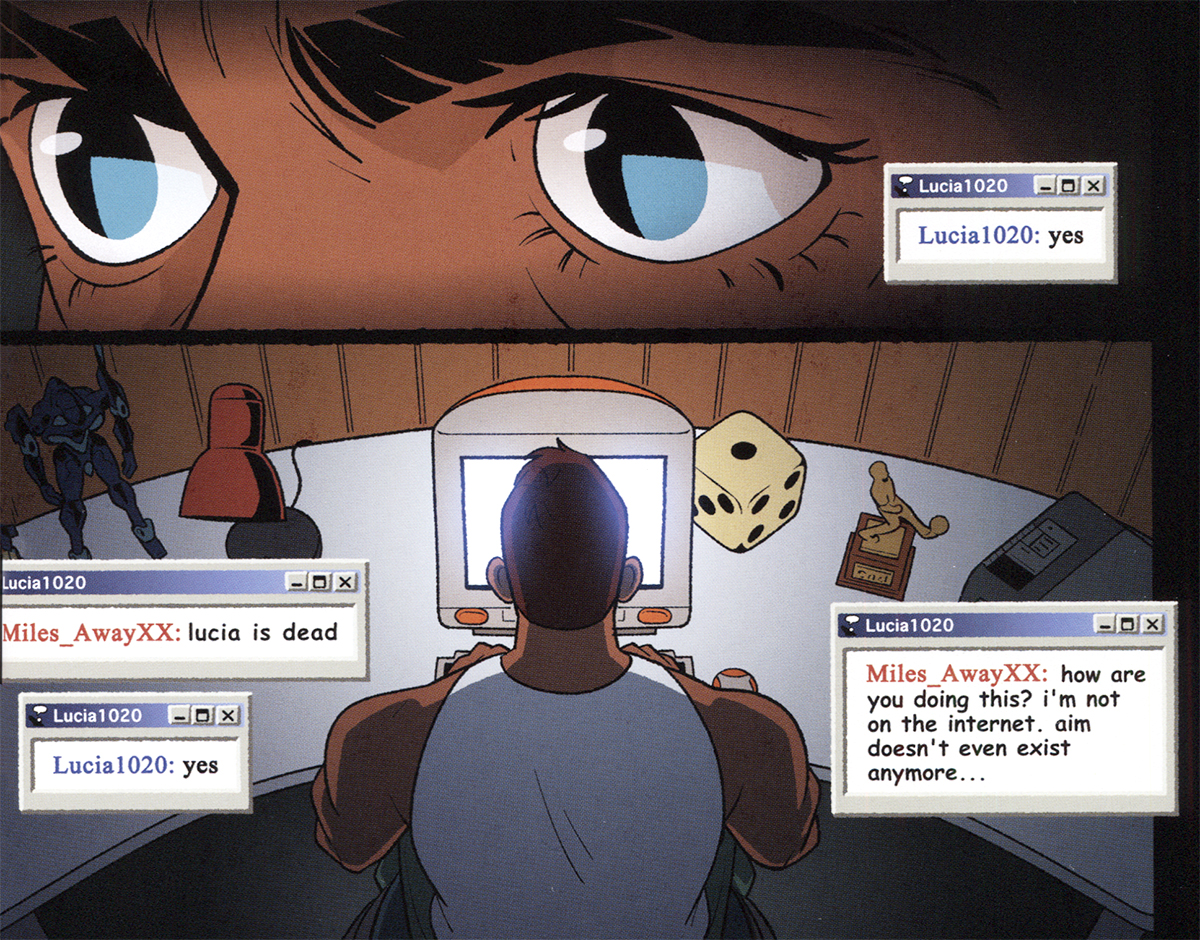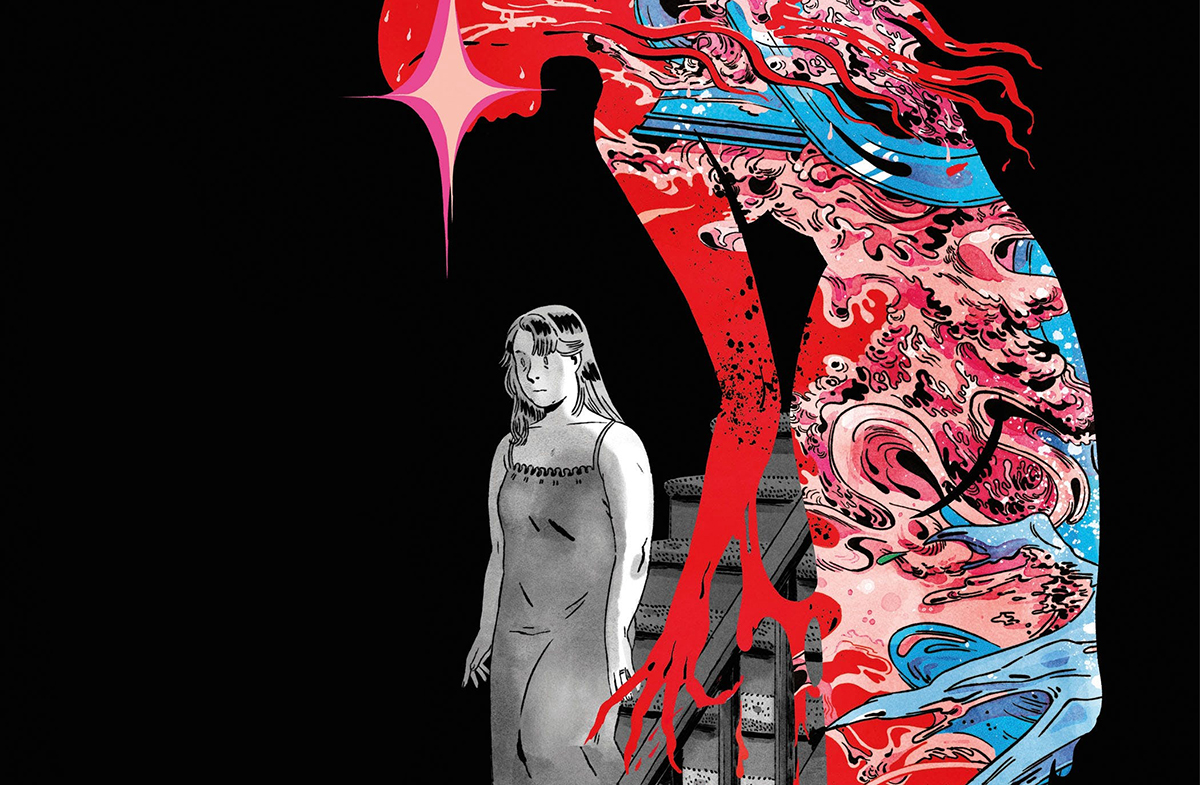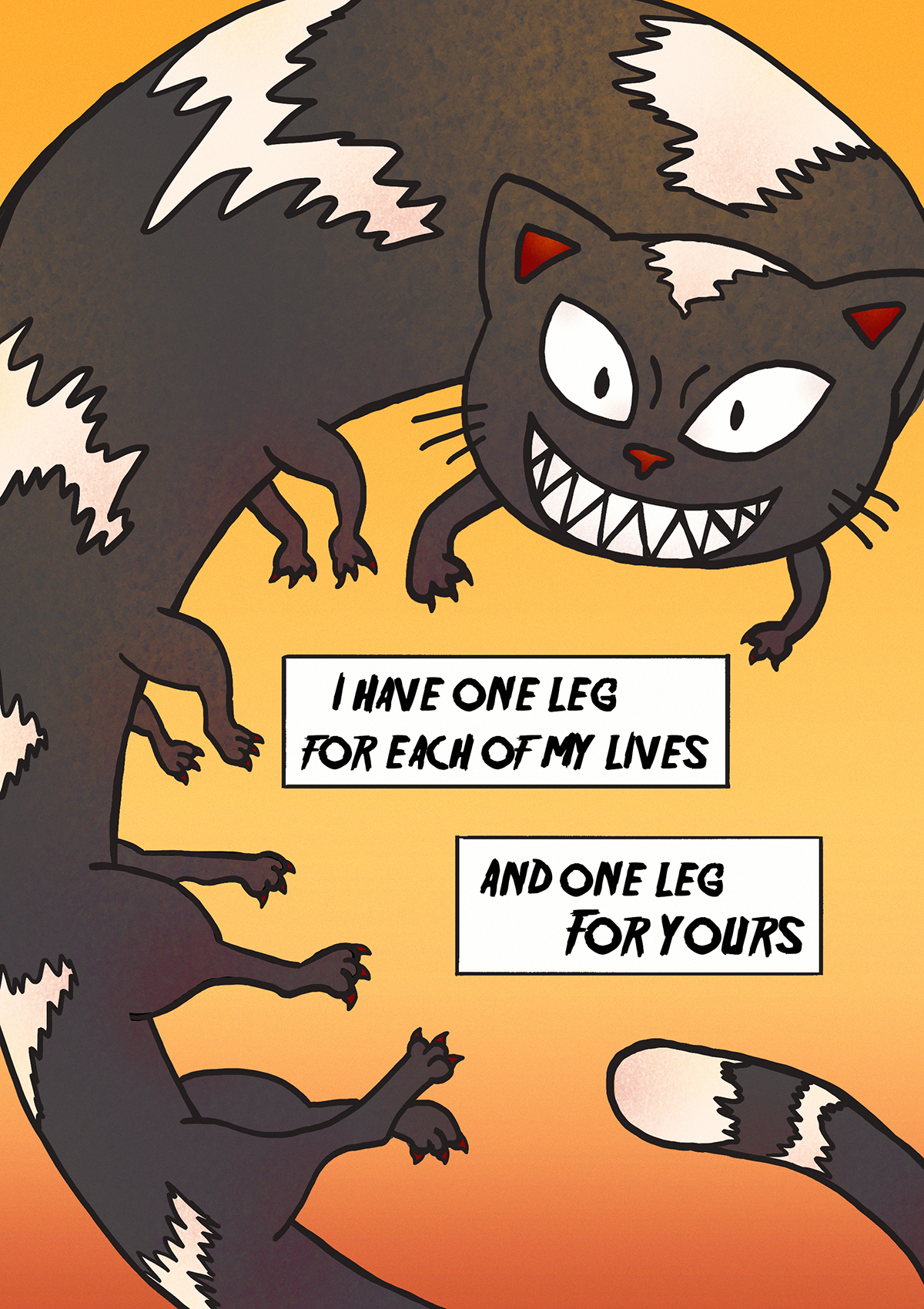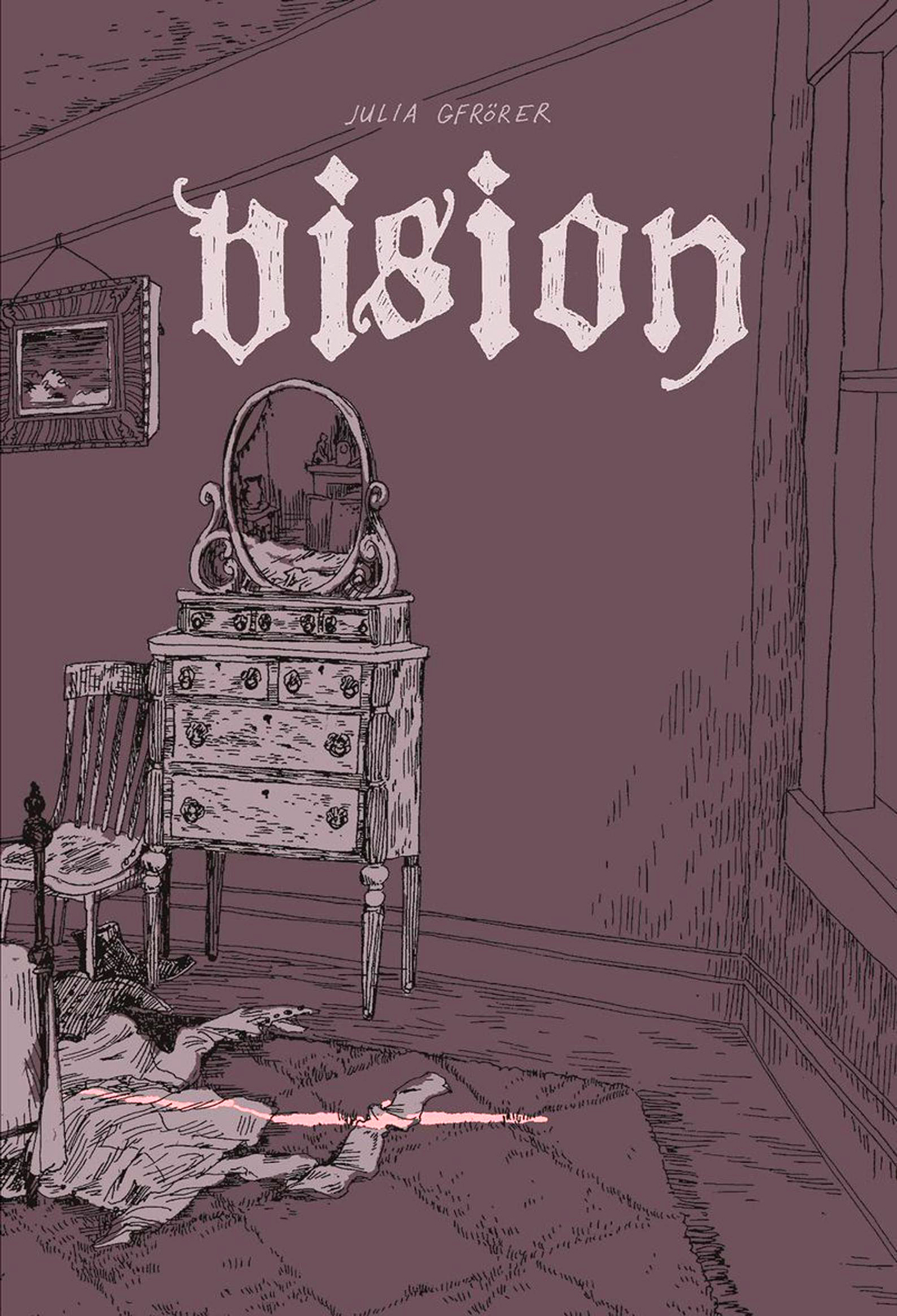I’m super grateful to Comics Beat for giving me the opportunity to review the newest horror comics collection from Adam Ellis, Let Me in Your Window. These gorgeously drawn stories offer disturbing insights into the murky shadows of internet culture, as well as brilliant speculation on potential digital futures.
Something I always appreciate about Ellis is how he documents the many absurdities of both corporate platform policies and social media subcultures alike. It’s easy to read the stories in Let Me in Your Window as spooky urban legends with no allegory… but also, I feel extremely Seen by Ellis’s characteristic take on digital horror. Here’s an excerpt from my review:
Adam Ellis’s second horror comic collection, Let Me in Your Window, is digital horror at its finest. As the successor to Ellis’s 2024 collection Bad Dreams in the Night, Let Me in Your Window ventures even deeper into the wires as it speaks to anxieties surrounding the omnipresent ghosts that speak to us through our screens. Even if most of us are content to allow these phantoms to pass unnoticed, it can be unnerving to realize that we’re ghosts as well – ghosts being watched, ghosts being catalogued, and ghosts that constantly leave behind traces of our former selves. The ten stories collected in Let Me in Your Window invite the reader to reflect on what it means to inhabit the constantly unfolding urban legends of online culture.
You can read the full review on Comics Beat here:
https://www.comicsbeat.com/graphic-novel-review-let-me-in-your-window/










